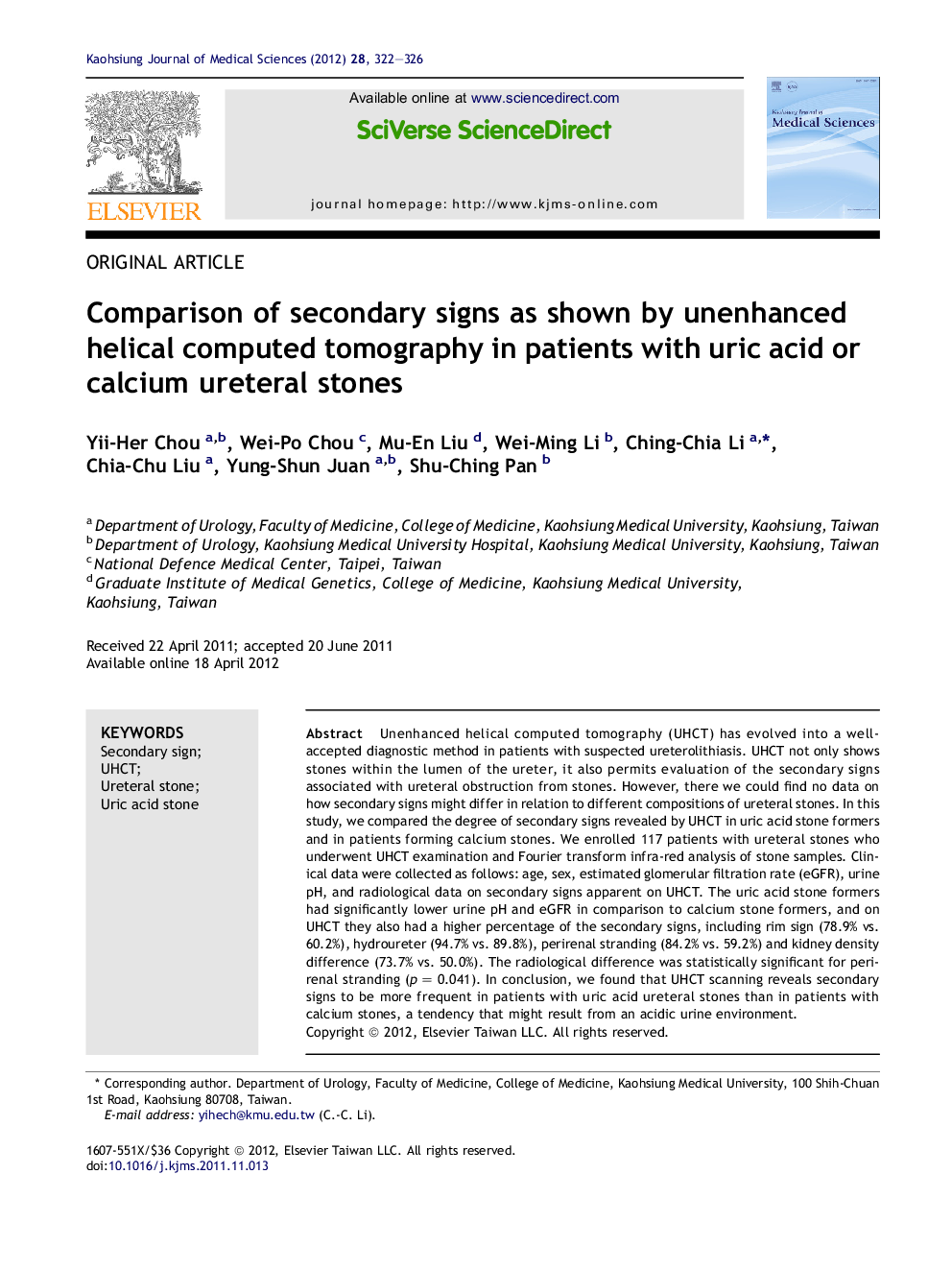| Article ID | Journal | Published Year | Pages | File Type |
|---|---|---|---|---|
| 3485854 | The Kaohsiung Journal of Medical Sciences | 2012 | 5 Pages |
Unenhanced helical computed tomography (UHCT) has evolved into a well-accepted diagnostic method in patients with suspected ureterolithiasis. UHCT not only shows stones within the lumen of the ureter, it also permits evaluation of the secondary signs associated with ureteral obstruction from stones. However, there we could find no data on how secondary signs might differ in relation to different compositions of ureteral stones. In this study, we compared the degree of secondary signs revealed by UHCT in uric acid stone formers and in patients forming calcium stones. We enrolled 117 patients with ureteral stones who underwent UHCT examination and Fourier transform infra-red analysis of stone samples. Clinical data were collected as follows: age, sex, estimated glomerular filtration rate (eGFR), urine pH, and radiological data on secondary signs apparent on UHCT. The uric acid stone formers had significantly lower urine pH and eGFR in comparison to calcium stone formers, and on UHCT they also had a higher percentage of the secondary signs, including rim sign (78.9% vs. 60.2%), hydroureter (94.7% vs. 89.8%), perirenal stranding (84.2% vs. 59.2%) and kidney density difference (73.7% vs. 50.0%). The radiological difference was statistically significant for perirenal stranding (p = 0.041). In conclusion, we found that UHCT scanning reveals secondary signs to be more frequent in patients with uric acid ureteral stones than in patients with calcium stones, a tendency that might result from an acidic urine environment.
